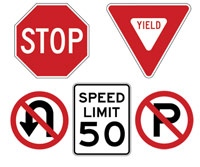Traffic flagging is an important component of road safety, and it is essential that flaggers are properly equipped and trained to perform their duties safely and effectively. In this article, we will discuss the equipment and techniques used in traffic flagging.
Equipment Used in Traffic Flagging
Flaggers use a variety of equipment to communicate with drivers and direct traffic around hazards and obstacles on the roadway. Some of the key pieces of equipment used in traffic flagging include:
Reflective Clothing: Flaggers wear reflective clothing to make themselves visible to drivers, especially in low light conditions. Reflective clothing should be high-visibility and meet the safety standards.
Stop/Slow Paddles: Stop/slow paddles are used to direct traffic and indicate when drivers should stop or proceed slowly through the work zone. Stop/slow paddles should be highly visible, with bright colors and reflective materials.
Flags: Flags are used to supplement hand signals and indicate changes in traffic flow. Flags should be highly visible, with bright colors and reflective materials.
Whistles: Whistles can be used to get the attention of drivers and pedestrians in noisy work zones. Flaggers should use a standard series of whistle blasts to indicate different instructions.
Techniques Used in Traffic Flagging
Flaggers use a variety of techniques to communicate with drivers and direct traffic around hazards and obstacles on the roadway. Some of the key techniques used in traffic flagging include:
Hand Signals: Hand signals are the most common technique used in traffic flagging, and flaggers use a standard series of hand signals to communicate with drivers. Hand signals should be simple, easy to understand, and used in combination with other forms of communication, such as verbal instructions.
Verbal Instructions: Verbal instructions can be used in combination with hand signals to communicate with drivers. Verbal instructions should be clear, concise, and easy to understand.
Eye Contact: Flaggers should maintain eye contact with drivers to ensure that they are aware of their presence and instructions. Flaggers should also be aware of their surroundings and avoid distractions, such as cell phones or other electronic devices.
Positioning: Flaggers should position themselves in a safe and visible location to ensure that they are visible to drivers and pedestrians. Flaggers should also be aware of their surroundings and avoid standing in areas where they may be at risk of injury.
Timing: Flaggers should time their signals and instructions to ensure that drivers have enough time to react and respond appropriately. Flaggers should also be aware of changes in traffic flow and adjust their signals and instructions accordingly.
Conclusion
Traffic flagging is a critical component of road safety, and flaggers must be properly equipped and trained to perform their duties safely and effectively. Flaggers use a variety of equipment, such as reflective clothing, stop/slow paddles, flags, and whistles, to communicate with drivers and direct traffic around hazards and obstacles on the roadway. Flaggers also use a variety of techniques, such as hand signals, verbal instructions, eye contact, positioning, and timing, to communicate with drivers and ensure the safety of everyone on the road. By understanding the equipment and techniques used in traffic flagging, we can all do our part to ensure that our roads are safe and secure for everyone.


